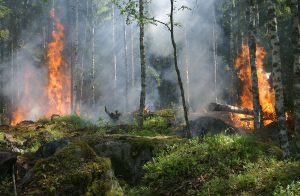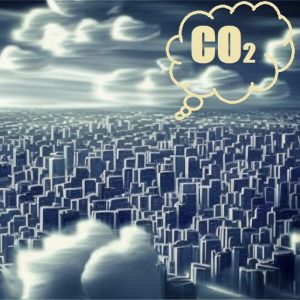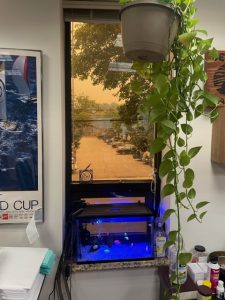Climate
Imagine going for a walk deep in the woods paying attention to nothing but bird watching. With binoculars trained on tree cover, if you don’t stop to take note of where you are and where you are heading, you’re asking to get lost, twist an ankle, step on a copperhead, frighten a bear, or lose track of time leaving you prone to a return trip in the dark.
Or … much like northern areas of the U.S. discovered recently, you could find yourself suffering unexpected smoke inhalation due to forest wildfires that aren’t even burning in your country.
 Climate catastrophes:
Climate catastrophes:
We have arrived.
Pushing analogies aside, the planet has arrived at a point where climate change is making wildfires more frequent and severe around the world. According to the National Interagency Fire Center (NIFC), U.S. wildfires increased 223% since 1983, resulting in more than 199 million acres burned. Worse, we can expect such trends to continue as global temperatures rise and droughts intensify. Hot, dry climate helps spread forest fires further and faster whether started by lightning or human activity.
Wildfires have devastating impacts on people, wildlife, and ecosystems. They destroy homes and infrastructure, release harmful pollutants, and threaten biodiversity. To add insult to injury, the burning of vegetation and soil releases more carbon dioxide and other greenhouse gases which feed the very issues (rise in temperature and drought) that cause widespread burning.
What control do we have over wildfires?
To reduce the risk and severity of wildfires, multifaceted action is necessary:
- Cut greenhouse gas emissions to limit global warming and its effects on weather patterns and vegetation.
- Manage forests and landscapes more sustainably to restore natural fire patterns and reduce fuel loads.
- Upgrade fire prevention and suppression strategies.
Well, we’re no fire rangers, but we do practice and offer ways to reduce humanity’s carbon footprint through innovative dedicated outdoor air systems (DOAS) that make living indoors less toxic to the planet.
Fact 1: In the U.S., the largest source of greenhouse gas emissions comes from burning fossil fuels for electricity, heat, and transportation. Fact 2: Building stock contributes 40% of global CO2 emissions yearly, with 27% of that caused by building operations. Conclusion? Building professionals! We are positioned to take a nice chunk out of yearly emissions with sustainable HVAC that reuses heat energy, runs off very little electricity, and could be run off solar as well.
Fact 2: Building stock contributes 40% of global CO2 emissions yearly, with 27% of that caused by building operations. Conclusion? Building professionals! We are positioned to take a nice chunk out of yearly emissions with sustainable HVAC that reuses heat energy, runs off very little electricity, and could be run off solar as well.
Nobody can play superhero in every sector of human life that contributes to greenhouse emissions. We can pay attention to the sector from which we draw our livelihood. Let’s get people seeing that the snake¸ the bear, twilight – the heat of global warming is no longer approaching. Time to drop the binoculars: It’s here.
Please let us know how we can help you do your part in lowering emissions. We’re standing by with innovative DOAS design, equipment, and the experience to make a difference.
 Side Note: Air quality in Northern NJ was a smelly orange mess due to Canadian Wildfires. Our offices? Lovely indoor air quality. Our ERVs held MERV 8 filters, and we didn’t need to slow the fans! Even we were impressed. If that had not worked, we might have switched to MERV 11 and/or slowed the fans. Some will recommend MERV 13 or higher, but those filters may blow out the fans in the air handler after a while. Others will swear on HEPA filters, which is fine, too. Either way, start with the right mechanical ventilation equipment first.
Side Note: Air quality in Northern NJ was a smelly orange mess due to Canadian Wildfires. Our offices? Lovely indoor air quality. Our ERVs held MERV 8 filters, and we didn’t need to slow the fans! Even we were impressed. If that had not worked, we might have switched to MERV 11 and/or slowed the fans. Some will recommend MERV 13 or higher, but those filters may blow out the fans in the air handler after a while. Others will swear on HEPA filters, which is fine, too. Either way, start with the right mechanical ventilation equipment first.
